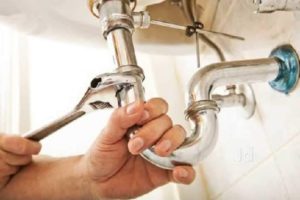Property owners invest money and time in purchasing an air conditioning unit. The unit specifications define whether it provides enough capacity for the entire property. The square footage of the property helps the property owner find a unit that keeps the entire property cooler during the summer and helps homeowners avoid heat-related health risks.
An efficient AC unit also keeps energy consumption at a minimum and doesn’t increase monthly costs. As homeowners know a central air conditioning unit lasts up to 15 years, and to extend its lifespan, the property owner is encouraged to follow these 6 steps.
Schedule Regular Maintenance Services
Scheduling regular maintenance services prevent serious wear and tear on the unit. The services include a thorough inspection of the unit for any mechanical issues that cause component damage. Seasonal cleaning eliminates all debris that is accumulated inside the interior and exterior components. Leaves, dust, and debris plug the units and prevent them from performing properly.
Maintenance strategies lower the risk of failures and ensure that the unit has adequate refrigerant to generate enough cool air at all times. To learn more about vital maintenance steps, visit blairsair.com now.
Replace the Thermostat With an Energy Saving Model
The thermostat is more likely to become faulty before any other components. A thermostat doesn’t have a long life but is vital for keeping the units operating appropriately. A programmable thermostat is the best choice for residential property and helps the owner control energy costs.
The new models work well with home automation services that allow the owner to control the thermostat remotely through the home network. Other features are often programmed into the thermostats, such as options for heated flooring in the winter.
Change the Filters Regularly
Changing the filters regularly prevents blockages in the air conditioning unit. It is blockages that frequently lead to damaged motors and fans. If the filter isn’t changed at least once a month, dust and debris accumulate and cause serious problems.
Cooled air won’t circulate through the property if the interior unit is clogged. In fact, it could cause the condenser coil to freeze and lead to catastrophic damage inside the unit.
Using an air cleaner could extend the use of the filters and cut down on costs for the property owner. The cleaners are placed near the air conditioning unit and collect dust quickly.
It is an effective strategy for keeping the home free of allergens, dust, and microbes. Contractors often recommend different air cleaners according to the air conditioning unit the homeowner installs.
Ensure the Ductwork is the Right Size
If the ductwork isn’t the right size for the air conditioning unit or the home, the air conditioning unit will suffer for it, and the home won’t stay cool enough. Contractors review the current size of the ductwork when installing a new air conditioning unit and identify the best size for the home.
The square footage of the home and the load provided by the air conditioning system define what type of ductwork is sufficient for keeping the home cool.
Cleaning the ventilation system is also key to preventing blockages throughout the property. The property owner must evaluate the condition of the ventilation system before starting the unit each year. If there are any existing blockages, the property owner schedules cleaning services promptly. If any mold or mildew are found, remediation services are vital for preventing respiratory illnesses.
Clean the Unit More Often If You Have Pets
Pet owners know all too well that pet hair and dander will get everywhere. This includes the interior of the air conditioning unit. Contractors recommend property owners schedule a deep cleaning of the unit at least once a month to prevent pet hair from causing serious damage inside the unit.
During the process, the contractor takes the unit apart and cleans all the way down to the motor and the fan. It is these components that are affected most often by pet hair and dander. Cat hair will get trapped in these areas almost every day if the property owner isn’t cleaning the home proactively.
Once the hair gets sucked into the motor, it could cause serious component damage that proves costly for the pet owner. If the homeowner has several long-haired cats, it is also recommended the owner adds extra air cleaners throughout the home and vacuum carpeting at least once a day to control pet hair.
Schedule an Inspection or Repairs at the First Sign of an Issue
At any time the property owner notices the unit isn’t performing as expected, an inspection is needed. Contractors complete the inspections and test the components to find the source of the problem. Common signs of issues are a sudden decrease in cold air, a failure to produce any cold air, and unexplainable noises.
If the unit starts to engage irregularly, it is a sign the unit isn’t performing properly or the thermostat isn’t reading the room temperature accurately. Even a small draft could lead to this issue and increase energy costs significantly.
Refrigerant levels are affected if the unit has a leak inside or outside. The leaks are dangerous for the environment and increase the risk of damage to the ozone layer. Contractors must have the proper certification to handle refrigerants. When reviewing the issues, it is important to determine if the unit has too much or too little refrigerant.
Contractors use gauges to evaluate the levels and specialized tools to remove overcharges of the refrigerant. Leaks also require a quick fix to prevent more of the gas from escaping into the atmosphere.
Homeowners choose air conditioning units according to the square footage of the home and what is needed to cool it. When maintaining the units, the homeowner follows careful instructions included in the product’s warranty. Although the standard lifespan of the units is 15 years, there are ways to increase the air conditioner’s useful life. Homeowners who follow tips carefully have longer-lasting air conditioning units.



